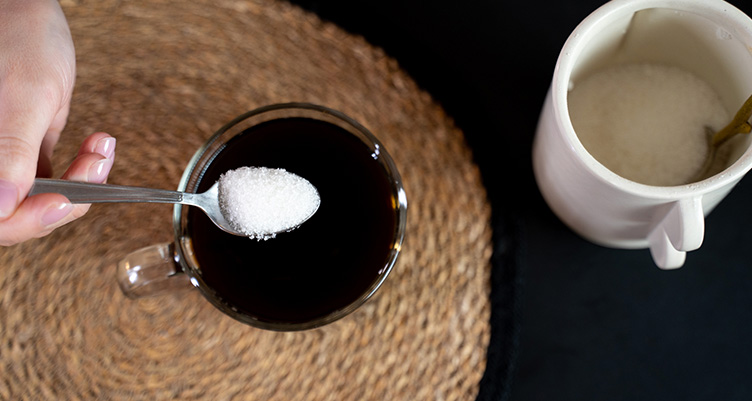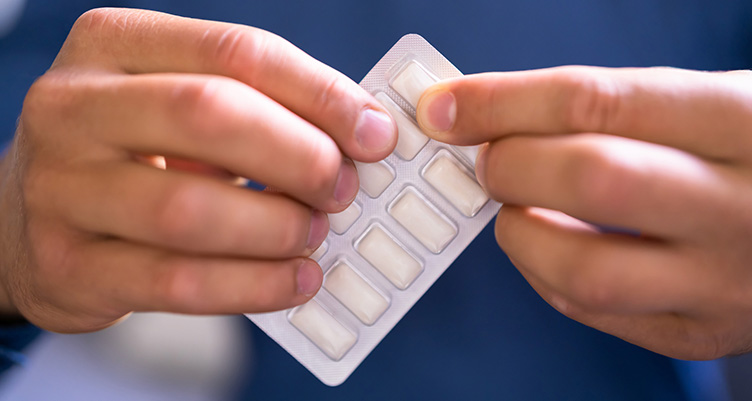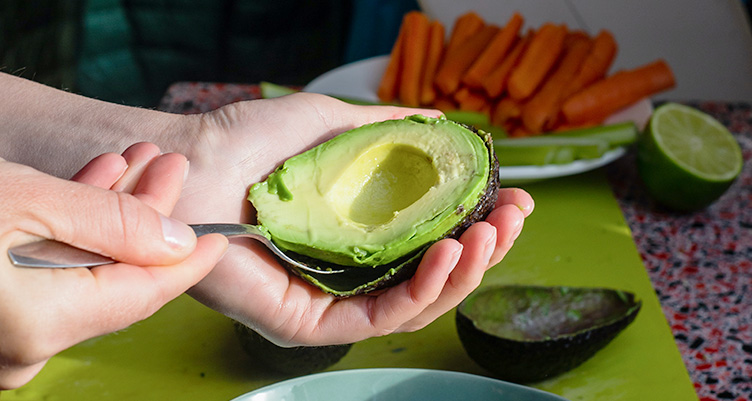Narrator:
Coming up on this episode of the doctor’s pharmacy,
Dr. Mark Hyman:
Quality matters. Not all protein is the same, just as not all fat is the same or carbs are the same.
Welcome to the Doctor’s Pharmacy. I’m Dr. Mark Hyman and it’s pharmacy with an AFA place for conversations that matter. And if you’re confused about protein, you’re going to love this podcast. Should you be a vegan? Should you eat meat? Should you be a carnivore? Should you be an omnivore? What is the amount of protein we need? What kind of protein is good for us? When should we eat it? We’re going to answer all these questions today in our new series called Health Bites, which are little bits of information, little bites of information, small steps that you can use every day to make big changes over time in your health. So let’s get into it. Protein is a critical nutrient. Now, protein is interesting because it’s the only macronutrient like protein, fat and carbs that we need in large amounts. There is no biological requirement for carbohydrates, despite what you may think.
It doesn’t matter if you eat a single carb, your body doesn’t need it. It’s not an essential nutrient. Now, there are a lot of benefits from eating different carbs, for example, like vegetables or carbs, but a body doesn’t need it. Second is fat. Now fat, there are essential fatty acids, but they only need them in gram amounts. Very small, like a couple of fish oil pills basically amount. It’s not a huge amount. Protein on the other hand, we need in very large amounts in multi gram amounts. So we need probably 30 to 40 grams a meal, maybe 90 to 120, 180 grams a day, depending on your size. So this is a very interesting thing. So the question is, what does protein do well? Why do we need so much of it? Well, it’s an essential nutrient because it’s the stuff we’re made of, right?
We make proteins. That’s all your DNA does. The DNA is very simple. It basically transcribes the sequence of amino acids that are needed to build a particular protein. That’s all your DNA does. So it assembles amino acids. The proteins. Proteins are the structural material for your body, muscle, bone, pretty much everything. Your immune system is made from protein, for example, the antibodies, your peptides are made, which are these thousands of cellular communication molecules. It’s critical that we eat adequate amounts of protein. It’s also the most essential thing we need to build and maintain muscle and prevent muscle loss. And as you know, I’ve been very focused on longevity. Of course, I’m going to be 64 this year, so I get more and more interested in as the time goes by. And you need adequate types of the right protein to make sure you don’t get, we call sarcopenia, which is muscle loss.
And that is one of the biggest drivers of age-related disease. And we’re going to talk more about that. So you need to optimize your nutrition. You need to make sure you’re eating the right amount for you, and you need to make sure that we understand protein and get out of the weeds, the ideological view, and talk about the science. So today we’re going to talk about the science. We’re going to talk about how to up your protein intake. We’re going to talk about why the guidelines for protein intake are wrong and confusing for people, and even give you a delicious smoothie protein-rich smoothie that you can use and that I often use to start my day. Alright? So we’ve known for years and decades, the protein is a critical part of our diet because they’re basically the building blocks for our body. It makes everything from muscles, organs, our skin, neurotransmitters, cytokines, peptides, all the things that our body is doing to actually run everything.
It’s really one of the most essential things because we can’t get all the amino acids from eating other foods. We have to eat the protein in the right amounts, and we have to have the right amount of amino acids. Our body doesn’t make them. Some are derivatives. So there’s some core essential amino acids, and we have to make sure we get them from our diet in the right amounts in the right time. And when we look at the research on longevity, there’s a lot of controversy. Some people say, oh, don’t eat protein because it’s going to actually activate mTOR or is known as one of the key regulators of longevity. If you activate mTOR, it increases protein synthesis, it increases muscle mass. It can actually accelerate even cancer growth. So it’s not good in certain ways, but if you inhibit mTOR, you actually cause autophagy and self-cleaning and the longevity process.
So what should you do? Well, I wrote a lot about this in my book. It’s like anything else. You want periods of fasting and not eating overnight, at least 12, 14, 16 hours. And then you want to make sure you have enough protein during the day so you actually can do the functions of protein in your body, for example, muscle building and so forth. So it’s not like it’s all bad or all good, it’s really about how and when and what. So we’re going to get into the how and when and what. And if you look at the biggest risk factor for age-related decline, it’s loss of muscle because when you lose muscle, you increase inflammation, you increase insulin resistance, your sex hormones go down, your cortisol goes down, your growth hormone goes down, means cortisol goes up. I mean, so you basically end up in this hormonal chaos of levels of inflammation, pre-diabetes, it’s really bad.
Now let’s talk about how it affects our appetite, our metabolism and so forth, and why it’s important. So we’re going to talk about a little bit more about why protein matters. But in terms of hunger, when you eat protein, it actually inhibits ghrelin and increases the production of a hormone called peptide YY or PYY, which is a gut hormone or peptide that makes you feel full and satisfied, right? So higher amounts of approaching can decrease the ghrelin, which is the hunger hormone. It also increases your metabolic rate. There’s something called the thermogenic effect of protein. You basically takes more energy to break down protein, so you burn more calories, metabolizing protein. So in a way, even though let’s say a hundred calories of sugar, maybe it takes like three calories to actually metabolize it. Whereas protein, it might take 20 calories to metabolize. So your net calories is lower when you’re having protein.
So it’s been linked to weight loss. Also, having protein in each meal provides a way to regulate your appetite, helps with weight management, helps with maintaining muscle mass because often people lose both muscle and fat when they lose weight. And then you end up having a slower metabolism, which people say, oh geez, I don’t know why I lost weight and I have to eat less because if I eat a little more, I gain weight. Or people are overweight, say I don’t really eat that much. And sometimes that’s true because they’ve lost so much muscle, their metabolism is so slow that they can’t burn the calories. So the protein is critical, and your muscle burns. A lot of calories actually burns about seven times as much calories as fat. So the more muscle you have, the more calories you burn and the easier just to maintain your weight.
And that analysis, for example, in 2020 found that a high protein diet can increase weight loss and help the weight stay off and prevent obesity and various related diseases. So that’s really important. Also, the requirements that the government has, the recommended dietary allowance or RDA or RDI reference dietary intakes. They change the terminology all the time, but essentially we’re told that we need about 0.8 grams per kilo of protein. Now, how do they come up with that number? Well, that number is based on how much protein do you need to not get a deficiency disease? In other words, how much protein you need to not get quash your core or rasmus, which are these protein deficiency diseases? And that’s not that much. So it’s not the amount we need for optimal health. And people go, oh, I don’t need more than 0.8 grams per kilo.
Well, no, that’s the floor for most people. So what do we actually need? It depends on your activity level, how much strength training you do, your life goals and your age. When as we age, we don’t actually build muscles easily. We have something called anabolic resistance. So we actually need more protein as we get older. I tell a story in my book about Emma Morano, my book Young Forever. She was 117 years old when she died, when she was in her nineties, she was starting to get frail, and her doctor told it, I think 150 grams of meat a day, which sounds like a lot, but it actually, it’s not as much as you think. And she was fine and she got strong again and she ended up living to 117 years old. So I think we have to look at that and go, maybe they’re onto something.
So the amount we need is probably more like up to a gram per pound or 1.6 or even up to two grams per kilo in a day. And that may seem like a lot, but there’s a way to do it, and it’s not as much as we think. For example, a small chicken breast has four ounces, which is not that much. It’s probably half of what people normally eat is actually 40 grams of protein, almost 40 grams of protein. So that’s important to understand. You don’t have to have huge amounts of steaks or meat or anything like that. It’s really relatively small amounts that gives you a big bang for your buck. Now here’s another really important point. Quality matters. Not all protein is the same just as not all fat is the same or carbs are the same. Broccoli is a carb, but so is Coca-Cola, right?
Trans fat or Crisco is fat and so is omega fats, but they have profoundly or olive oil, they have profoundly different effects on the body. Same thing with protein. Not all protein is equal. Now, part of the problem is right now, I think people think that eating meat is bad for your health and bad for the planet. And I’ve written a lot about this, I’ve talked a lot about it. I think it’s a complicated subject, but from a health perspective, the data just isn’t there to show that meat is bad for your health. It really is not. When you look at these population studies, they’re confounded. There’s problems with them, and there’s been a lot of reviews of this. I go into it in depth in a number of my books, including food, what the Should I Eat and the Pegan Diet? You want to read more about it?
We’ll link to those, but I think it’s a whole nother podcast to get into that conversation. But the reality is that when you, for example, for example, look at meat eaters and vegetarians who shop in health food stores and they did a study of 11,000 people, they found that their risk for death was reduced in half. But for both groups, it’s not the meat, it’s what you’re eating it with. If you’re having hamburger fries and a Coke, it’s different than having a grass fed piece of meat with tons of veggies. For example, when I have a grass, grass-fed steak or a regeneratively raised steak, I’ll have three or four different vegetable dishes. So I have a lot of phytochemicals. I don’t eat a ton of sugar and starch with it, and it’s a very different kind of approach. Now, industrial meat is not good. So we should not be eating feedlot meat.
We should not be eating industrial agricultural products. And when you have industrial meat, it’s got hormones, antibiotics, they feed it grain and so forth. They’re not used to their diet and they get different types of fats and more inflammatory process. But grass fed meat is far superior and so is regenerative meat. Regenerative is way better. And there’s a company called Force of Nature, which you can go on force of nature.com. I don’t have any financial ties to them, but they’re a great resource for finding regeneratively raised from around the world that actually is delicious, whether it’s venison, bison, beef. And it’s amazing because they’re raised in their natural environments. They have higher levels of omega fats, they have higher levels of minerals, higher levels of antioxidants, and it’s powerful. So also, if you’re eating fish and you want to eat fish, I know wild caught fish can be great, but there’s also regenerative fish that can be regeneratively farmed, which again is unusual, but fish is delicious.
Another company called Zootopia Fish, we’ll put that in the show notes. Again, no relationship to them, but I just love their products. And here’s the other part about protein. If you’re vegan, it is problematic because not all protein has the same types of amino acids. And one of the things in building protein in your body that’s so important in activating muscle synthesis and protein synthesis for muscle is an amino acid called leucine. And leucine is very low in plant proteins. Now you can get enough, but you have to eat a lot. In other words, to get enough of the same, you’d get, for example, in four ounces of chicken, you’d need like two cups of beans or six cups of rice or four cups of quinoa. It’s a lot. So you can’t really eat that much. It’s very tough to get the right amounts of leucine unless you supplement.
Now, if you want to be a vegan and you’re committed to that, you have to optimize your health by adding certain amino acids. And you can do that. You can make smoothies, you can put in branched amino acids, you can have mixture. You have the leucine you need. It’s doable, but it’s a lot harder. And you see, often as people stand a vegan diet, they tend to have muscle loss. And that’s a big concern, particularly as we age. So make sure you’re getting plenty of the right kinds of protein. You’re supplementing with amino acids and consider maybe even becoming a vegetarian and having grass fed goat whe, for example, which is a really great source of protein, which is I use. So let’s talk about how we can get more protein diet. What are a few ways to get more protein? Well, it’s not hard.
If you actually know what you’re doing and you have a plan, you think about it. First is, and this is a really important thing, you want to get at least 30 to 40 grams of protein per meal. And usually you can think about for your size, the palm size of a piece of protein, it’s probably what you need. So I’m six three, a hundred eighty pounds. It’s different than if I’m five two and 110 pounds. So we need different amounts depending on our size. But basically whatever your size of your pump is really a good amount. And you can focus on things like four ounces of chicken for ounce, some meat, probably more like six ounces of fish because the lower. And you can use whey protein. I like goat. Whe really is a powerful whey protein that doesn’t have as much allogenic properties. Or you can get legitimately raised grass fed goat, whe a two cows, a little harder to find.
So basically you want to make sure you get adequate protein. Now, it can be any of those things I just mentioned. For example, for lunch, I can grab some, A can or two of sardines. It’s really easy. It doesn’t have to be that hard. And the other thing is when you eat what, for example, if you eat sugar and starch at the beginning of your meal, for example, you go to a restaurant, they give you bread, basket, and wine, the worst thing you could possibly do, you want to eat protein and fat before you eat starch and any carbohydrates because it blunt the effect of the absorption and insulin secretion, which leads to sort of less weight gain and more feeling full and so forth. So you want to make sure you start with protein in your meal. And then the last thing is we have the worst breakfast in America. And the most important time eat protein is on a fasted state. So it’s not just the fasting that works to help your body, right? When you have this overnight fast of 12, 14, 16 hours, you activate something called autophagy, which is a process of self-cleaning and repair. But what matters also is what you eat after, right? If you have the typical American breakfast, which is basically sugar for breakfast, cereal, muffins, bagels, pancakes, and then I can go on and on. Poptarts even I used to eat poptarts for breakfast.
It’s amazing. I’m still as healthy as I am it. You want to not eat sugar for breakfast. You want protein for breakfast and you want a good load of protein. And when you refeed is when you activate muscle synthesis, activate stem cell production, produce all sorts of important benefits that are downstream from eating protein in the morning. So make sure you have at least 30, 40, even 50 grams depending on your size of protein in the morning. My typical way of doing it is to have a go WHE protein shake. I’ll also use my super simple protein as an added benefit as well because it’s got some collagen in it. So I kind of sometimes mix proteins. But the key is to get protein in the morning and make sure you do not have sugar for breakfast. No, you can have chicken for breakfast. You can have eggs.
Eggs. You need a little more eggs. It’s only about, I think five grams per egg. So to get 30 grams, you need six eggs, which is a lot of eggs, but you can have that scrambled eggs or an omelet and so forth. So I’m going to give you a little recipe I use, which is kind of a breakfast recipe, and I have many of them. I have a healthy aging shake in my book, young Forever. But this is a chocolate raspberry smoothie bowl. So here’s what you do. You blend your smoothie bowl with spinach, frozen cauliflower, rice and flax seeds. It gets it kind of thick. It’s like you can eat it with a spoon. Flax seeds kind of thicken it up. Then I top it with cacao nibs, hemp seeds, almonds, raspberries. But you can use any berries or fruits and it’s a combination of great protein, healthy fats, fiber and phytochemicals.
And it’ll leave you feeling alert, focused and energetic. And here’s what I use. A smoothie base is basically a scoop of pharmacy. Super simple grass-fed chocolate protein. I use a three quarters of cup of unsweetened vanilla almond milk, but you can use macadamia milk. One cup of baby spinach, loosely packed, two thirds of a cup of cauliflower rice. Now I know that sounds weird, but actually it comes out good. It makes it kind of creamy. One tablespoon of flax seeds and flax seeds have so many benefits. They’re source of a LA, which will Omega-3 fats. They have lignins, which help prevent cancer. They balance female hormones, they help with prostate health. They’re great for constipation. If you can’t go to the bathroom, I guarantee you this will be a winner for you. And put in cinnamon, a quarter teaspoon of cinnamon. Cinnamon has wonderful properties, for example of modulating blood sugar plus a taste.
Taste good on the toppings I use are a little teaspoon and a half of caca nibs, a teaspoon of hemp seeds, a tablespoon of sliced almonds, a bunch of raspberries. And so basically you put all the smoothie based ingredients in a blender. You puree it until it’s nice and smooth, and then you put the smoothie kind of bowl thing in a bowl. That’s why they call a smoothie bowl. And then you top with the toppings pretty easy. It doesn’t take that long to make you have all the ingredients in your house. But the key here is make sure that you get adequate protein, the right kinds of protein at the right time, and your life will change dramatically. For me, we may put in the show notes, but I had a picture of me when I was 40 and I was eating kind of mostly on the vegetarian side, not quite vegan, but mostly.
And I wasn’t eating that much protein. I exercised a lot. I was doing yoga, running, did a lot of stuff. I was kind of scrawny and very low muscle mass. I started to change my diet as I learned more and more about the science and started to exercise differently. I have such much more muscle mass and more definition at 64 than I did at 40. So it is quite amazing to see when you do the things right, your body can dramatically change and you can get a much healthier, alright? So however you choose to go about it, I really encourage you to find more ways to add protein to your diet. There’s lots of benefits, especially as you get older. It helps you maintain muscle mass. It helps you with the weight loss, it has essential nutrient. Your body needs to do everything it’s supposed to do.
So maybe you start off your day with a good protein smoothie, a delicious, delicious way to start the day. And it’s getting rid of sugar for breakfast. So that’s it for today’s health bite. If you want to share this with your friends and family, go ahead. We’d love to have you do that. Really appreciate it. And also subscriber, ever get your podcast? Leave a comment. How have you noticed your diet change? If you add protein, what have you learned about your own body’s response? We’d love to hear from you and we’ll see you next week on the Doctor’s Pharmacy.
Narrator:
I hope you enjoyed this week’s episode. Just a reminder that this podcast is for educational purposes only. This is not a substitute for professional care by a doctor or other qualified medical professional. This podcast is provided on the understanding that it does not constitute medical or professional advice or services. If you’re looking for help in your journey, seek out a qualified medical practitioner. If you’re looking for a functional medicine practitioner, you can visit ifm.org and search their find a practitioner database. It’s important you have someone in your corner who’s trained, who’s a licensed healthcare practitioner and can help you make changes, especially when it comes to your health.











